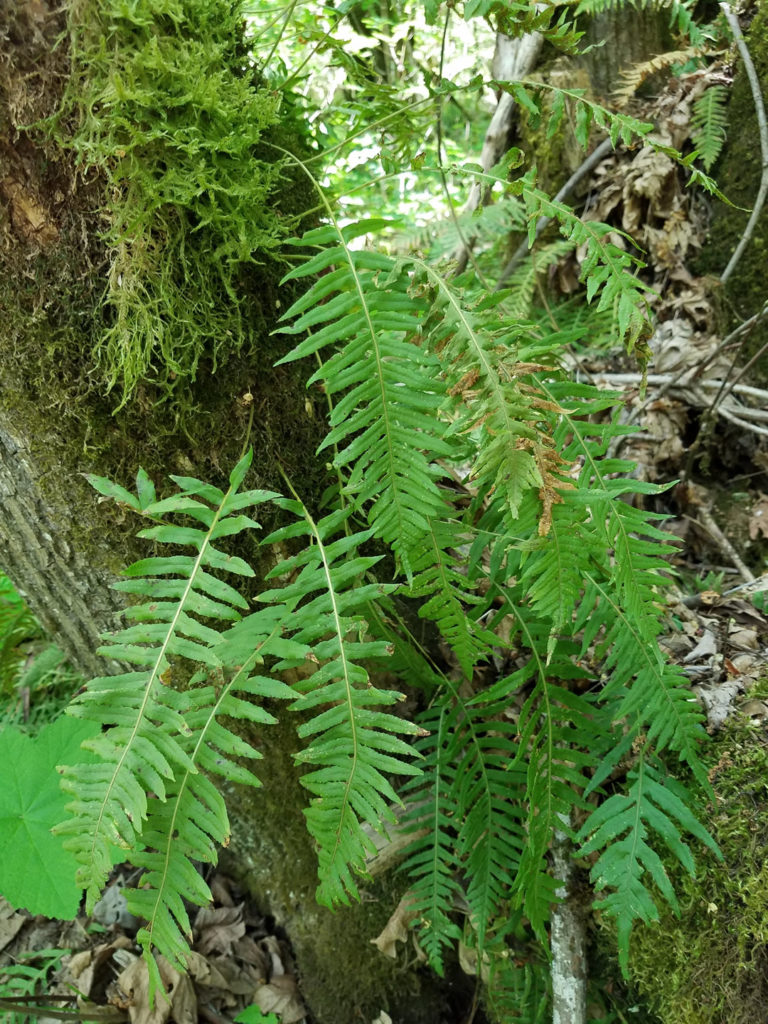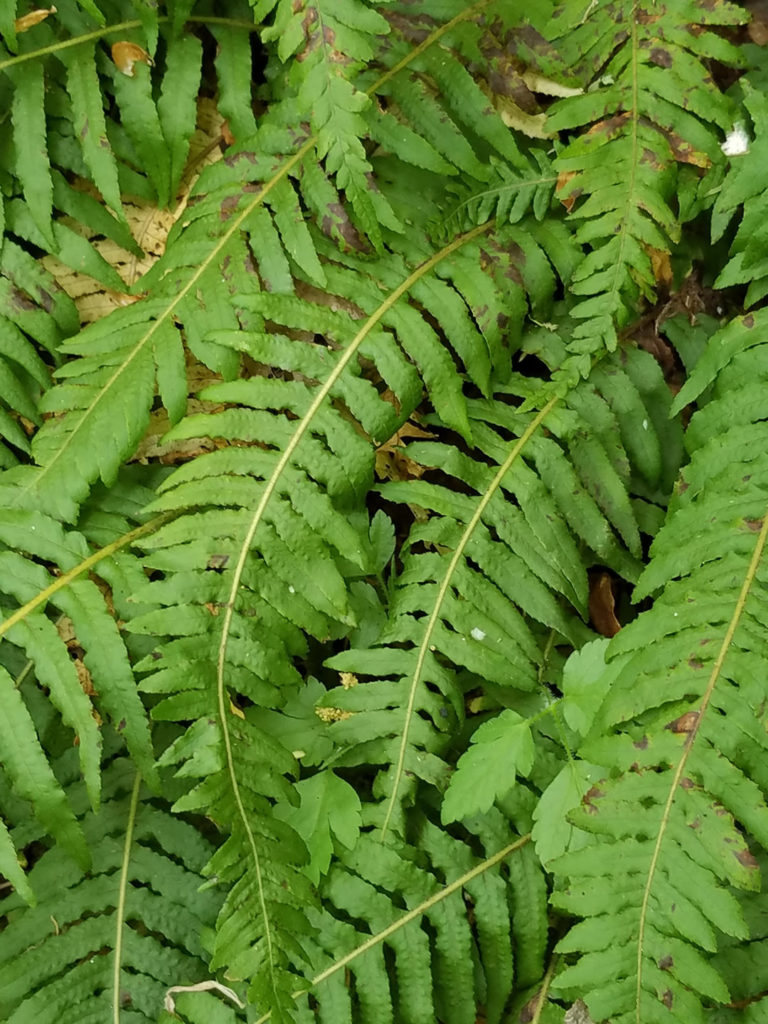

Licorice Fern, Polypodium glycyrrhiza
Polypodiaceae – Fern family
The branched stem or rhizome of the licorice fern look like so many (“poly”) feet (“podium”), thus explaining the generic name. The specific name refers to the sweet (“glycyr”) licorice smell of the rhizome (“rhiza”).
Moss-covered branches and trunks, particularly of big leaf maple, provide habitat suitable for licorice fern to thrive in Northwest woods. The medium green, pinnate leaves are up to a foot in length, and persist throughout winter. The licorice fern has adapted well to the warm and dry Northwest summers and wet and cool winters. Its leaves wilt and shrivel to a pale green in the heat of summer when water is sparse, but turn lush with the cool rains of fall. This survival strategy takes advantage of both increased water and sometimes increased sunlight, during the colder months – a time when the heavy forest canopy of summer has considerably thinned with the fall of deciduous leaves. Other plants have also adapted this strategy of dry season dormancy to our Northwest climate, including the water absorbent carpet of moss that is most often associated with the licorice fern. The rhizome of licorice fern was used sparingly for food and flavoring by Native peoples, for eaten in quantity, it reportedly has a laxative effect. The rhizome was also used as a remedy from cough (5-33).
Information courtesy of “The View From Springbrook Park; an Illustrated Natural History” by Ed Chinn.
Photos taken by Laura Tanz
Sponsored by Friends of Springbrook Park; Lake Oswego, OR